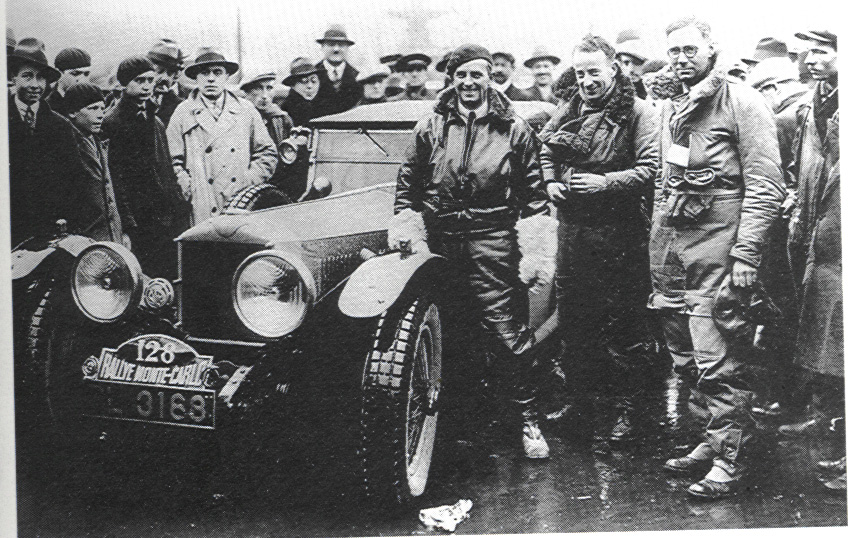History of
The Invicta Marque
History of The Invicta Marque
Prior to Invicta, Noel Macklin had already dabbled in the car industry, firstly making the ill-fated Eric-Campbell motor car, which was powered by a 1 ½ litre Coventry-Simplex engine.
Production started in 1918, and the cars initially won prizes in hill climbs and trials, but Macklin had left the company by 1921.
These were followed for a short period by the Silver Hawk, however Macklin’s interest really lay in steam power, and he owned both a Doble and a Stanley steam car.
Macklin wanted to build a car with the characteristics of a steam car. Smooth running with lots of torque, but with a petrol engine and good reliability.
He gained the backing of Oliver Lyle, of Lyle sugar manufacturer fame, and in 1925 Invicta was founded, with production based at The Fairmile, Cobham, Surrey, in buildings in the grounds behind Macklin’s home.
Oliver Lyle and his brother Philip did not like having to change gear, and wanted a car that was powerful and flexible enough, to ‘render excessive gear changing unnecessary’ so Macklin’s aim was to design a vehicle with an engine that was torquey and flexible and would enable top gear to be selected at very low speeds.
The first Invicta cars were duly powered by a 2 ½ litre Meadows six cylinder engine, mounted in a fairly light weight chassis, which gave good performance, and when driven by Noel Macklin’s sister-in-law, Miss Violette Cordery, the Invicta performed well and won several awards at Southport sands and other venues.
In 1926 the engine capacity was increased to 3 litres, and the larger engine proved successful, and Invicta took various records, including the Long Distance Record at Monza and also the 5,000 mile record at Montlhery holding an average speed of 70.70 mph, winning Invicta the Dewar Trophy for that year.
Building on this success, Miss Cordery drove a round-the-world trip with an R A C observer on board, to further establish the Invicta’s reliability.
In 1928 the Meadows engine was again increased in capacity, this time to 4 ½ litres.
This engine was initially fitted in the last few remaining 3 litre chassis, before the chassis frames were made stronger to cope with the increased power and in 1929 Miss Cordery used one of these new cars to take on the challenge of averaging 60 mph or over for 30,000 miles on the Brooklands track.
This was considered at the time to be an impossible mission, but the 4 ½ litre Invicta completed the distance with an average speed of 61.57 mph, and that impressive feat gained Invicta the Dewar Trophy for the second time.
In 1930, at the Olympia Motor Show, Invicta unveiled their new S Type low chassis 4 ½ litre car. It was dubbed ‘the mystery car of the show’ by The Evening Standard, having been made in secret and not seen until the event.
It had been designed by Invicta’s chief engineer, William Watson, and it caused a sensation with its low and very sporting appearance, and its suggested 100 mph top speed.
The S Type soon proved itself to be an excellent competition car, and in the hands of Donald Healey, won the Monte Carlo Rally in 1931, and had the fastest acceleration of any car entered.
The S Type went on to find more success in the hands of Raymond Mays, taking the International Record for Sports Cars at Shelsley Walsh hill climb in 1932, and also the Mountain Lap Record at Brooklands for un-supercharged cars, as well as many other notable victories and successes.
William Watson's Story
Memoirs from Noel Macklins’s Chief designer and engineer.
By 1932 Invicta had produced another model, but this time with a 1 ½ litre Blackburne engine, in the hope that a cheaper car might appeal to a larger market and save the company from the ravages of the Great Depression, but sadly it was not to be.
Invicta eventually went into receivership and limped on until 1935, building the last few cars at their service depot at Flood Street, Chelsea.
The Invicta name reappeared after World War Two, when a new company based in Virginia Water started to produce the Invicta Black Prince in 1946.
The car was designed by William Watson (who had previously worked for Noel Macklin and was responsible for the design of the pre-war S Type Invicta).
The very advanced and complex Black Prince was powered by a Meadows engine, but utilised a Brockhouse torque converter instead of a conventional gearbox. The company made approximately sixteen cars, before collapsing in 1950.
For a long period the Invicta name lay dormant, but was resurrected again by Michael Bristow, who formed the Invicta Car Company, in Chippenham, Wiltshire, and produced the Invicta S1 coupe. Launched at the 2002 British Motor Show, the thoroughly modern Invicta was powered by a Ford V8 engine, with a one-piece carbon body-shell mounted on a space-frame chassis. The company produced a small number of cars to order, but sadly closed its doors in 2012.
However Invicta cars from all eras are still being driven and enjoyed right across the world, and are a lasting legacy to Sir Noel Macklin and all the people who have been involved in their design, manufacture, and production throughout both the pre-war and post-war period.











